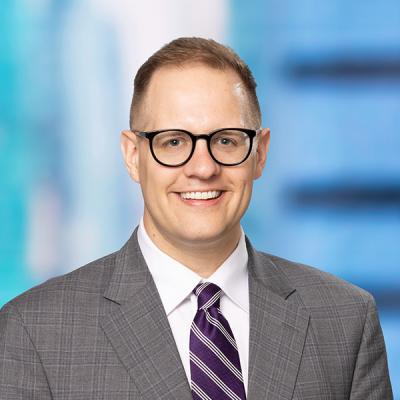Not a COVID-19 Blog Post: New York State Passes Permanent Paid Sick Leave Measures into Law
Following the enactment of COVID-19 quarantine leave benefits in March, New York State has now enacted permanent paid sick leave measures, which will require New York employers to provide various amounts of sick leave to employees starting on January 1, 2021. On April 3, 2020, New York Governor Andrew Cuomo signed into law the Fiscal Year 2021 budget, which contains the sick leave requirements (Part J). We highlight the new requirements of the law (new Labor Law § 196-b) below:
All New York Employers Are Obligated to Provide Sick Leave to Employees
New York State employers will be required to provide sick leave to employees, with employer responsibilities varying based upon an employer’s size (as measured by the largest number of employees it employs at any time during a calendar year). The employer must provide the employee at least the amount of sick leave time specified below, which may be provided in any consecutive 12-month period (e.g. a calendar year or fiscal year):
- Employers with 4 or fewer employees, and net income of less than $1 million in the previous tax year, must provide up to 40 hours (5 days) of unpaid sick leave each year.
- Employers with 4 or fewer employees, and net income of more than $1 million in the previous tax year, must provide up to 40 hours (5 days) of paid sick leave each year.
- Employers with 5 to 99 employees must provide at least 40 hours (5 days) of paid sick leave each year.
- Employers with 100 or more employees must provide at least 56 hours (7 days) of paid sick leave each year.
Starting September 30, 2020 (180 days after the law’s enactment), employees will begin accruing 1 hour of sick leave for every 30 hours worked (which is the same under NYC’s paid sick leave law), up to the 40-hour or 56-hour caps set forth above. The new legislation establishes a mandatory floor based on the metrics above, but employers may certainly provide a higher leave amount or faster accrual rate than the law requires. Starting January 1, 2021, employees may begin using sick leave (and for new hires as of January 1, 2021, there is no waiting period between accrual and use).
An employer may also frontload an employee’s sick leave time, but doing so will prevent the employer from later reducing the amount of sick leave already provided if the employee’s working hours change. Further, employers must allow employees to carry over accrued sick leave time to the next year, but can still cap the overall amount of sick leave use to 40/56 hours annually. Employers are not required to pay out unused sick leave time upon an employee’s separation.
Permitted Leave Uses
The law permits employees to use accrued sick leave for themselves or their family members (defined as a child, spouse, domestic partner, parent, sibling, grandchild, grandparent, or child/parent of a spouse/domestic partner) in the following ways, starting on January 1, 2021:
- For a mental or physical illness, injury, or health condition of the employee or the employee’s family member, regardless of whether the illness, injury or health condition has been diagnosed or requires medical care at the time the employee requests leave;
- For the diagnosis, care, or treatment of a mental or physical illness, injury or health condition of, or the need for medical diagnosis of, or preventive care for, the employee or the employee’s family member; or
- For an absence from work due to any of the following reasons when the employee or employee’s family member has been the victim of domestic violence, a family offense, sexual offense, stalking or human trafficking:
- To obtain services from a domestic violence shelter, rape crisis center, or other services program;
- To participate in safety planning, temporarily or permanently relocate, or take other actions to increase the safety of the employee or employee’s family members;
- To meet with an attorney or other social services provider to obtain information and advice on, and prepare for or participate in any criminal or civil proceeding;
- To file a complaint or domestic incident report with law enforcement;
- To meet with a district attorney’s office;
- To enroll children in a new school; or
- To take any other actions necessary to ensure the health or safety of the employee or the employee’s family member or to protect those who associate or work with the employee.
The law specifies that employers may not require employees to provide confidential information relating to illness, injury, health conditions, domestic violence, sexual offenses, stalking, or human trafficking as a condition for providing sick leave under this law.
Employers Must Satisfy New Documentation Requirements
The law requires employers to track accrual and use and maintain the information with other required payroll records for six years. Employers must also within three business days upon request from an employee, provide the employee with a summary of the employee accrued and used sick leave in the current calendar year or any previous calendar year.
Employee Protections
The law also includes anti-retaliation and job security provisions that prohibit employers from disciplining an employee in any way based upon the exercise of sick time leave rights, or failing to restore the employee to their previous position (with the same pay and other conditions of employment) after taking leave.
As passed, the law does not include any provision regarding a private right of action or regarding damages, nor does it reference any of Article 6’s damages provisions, so an employee’s remedies are unclear at the moment.
Existing Paid Time Off Policies & New York City Employers
New York State employers with existing paid sick leave or paid time off policies that meet or exceed the leave allotments, accrual rates, and carryover rules contained in the new law, and which permit employees to use leave for all of the enumerated purposes detailed above, do not face additional obligations.
Additionally, the law dictates that it “shall not be construed to prevent a city with a population of one million or more from enacting and enforcing local laws or ordinances which meet or exceed the [requirements of this law],” and that “[a]ny paid sick leave benefits provided by a sick leave program enforced by a municipal corporation in effect as of the effective date of this section shall not be diminished or limited as a result of the enactment of this section.” In effect, this means that New York City’s Sick and Safe Leave Law and Westchester County’s Earned Sick Leave Law are still in effect and are not preempted by state law, to the extent that those laws’ requirements are more expansive than those of the New York State law. It does not appear that any other local government will be able to enact local sick leave measures in the future given these provisions.
New York City employers should keep the following key differences in mind between existing New York City law, and the newly enacted New York State law:
- Large Employers Must Provide Additional Leave under New State Law: Under the new state law, employers with 100 or more employees must provide 56 hours (7 days) of paid leave, above and beyond the current New York City requirement of 40 hours (5 days) of paid leave.
- Small Employers with Higher Net Incomes Must Provide Paid Leave under New State Law: Unlike existing New York City law, small employers with 4 or fewer employees must provide employees with paid sick leave if their net income from the previous tax year exceeds $1 million.
- Notice Requirement in NYC: New York City employers must provide employees with a written notice of their rights. There is no indication in the law that New York State employers must do the same, but we will wait to see if the NYSDOL imposes a similar requirement in the future.
- Documentation Restrictions in NYC: Existing New York City law only allows employers to require documentation for an employee’s leave after the employee uses more than 3 consecutive workdays of safe/sick leave and no less than 7 days after the employee returns to work. We anticipate additional guidance from the NYSDOL on the documentation requirements and restrictions.
- Expanded Definition of “Family Member” in NYC: New York City also defines “family member” more broadly, providing New York City employees the ability to take leave related to a larger class of potential family members, including any “individuals related by blood to an employee” or any “individual whose close association with the employee is the equivalent of a family relationship.” This New York State law is more restrictive.
- NYC Law Covers Public Health Emergencies: Unlike the New York State law, New York City allows employees to take leave when an employer’s business closes due to a public health emergency, or where the employee needs to care for a child whose school or childcare provider is closed due to a public health emergency.
Next Steps for Employers
We expect that the New York State Department of Labor will issue regulations and guidance relating to this law in the coming months. Given that employees will begin to accrue sick leave time on September 30, 2020, and employees will become eligible to use sick leave time starting January 1, 2021, employers should begin reviewing and updating their sick leave programs and policies to ensure compliance with this new law. In addition to updating policies and procedures, employers should consider how they will communicate this change to employees, coordinate implementation efforts with their payroll provider and/or leave administrator, and update recordkeeping practices.

New York State to Provide Paid Sick Leave, Other COVID-19 Protections for Workers
March 27, 2020| Blog



